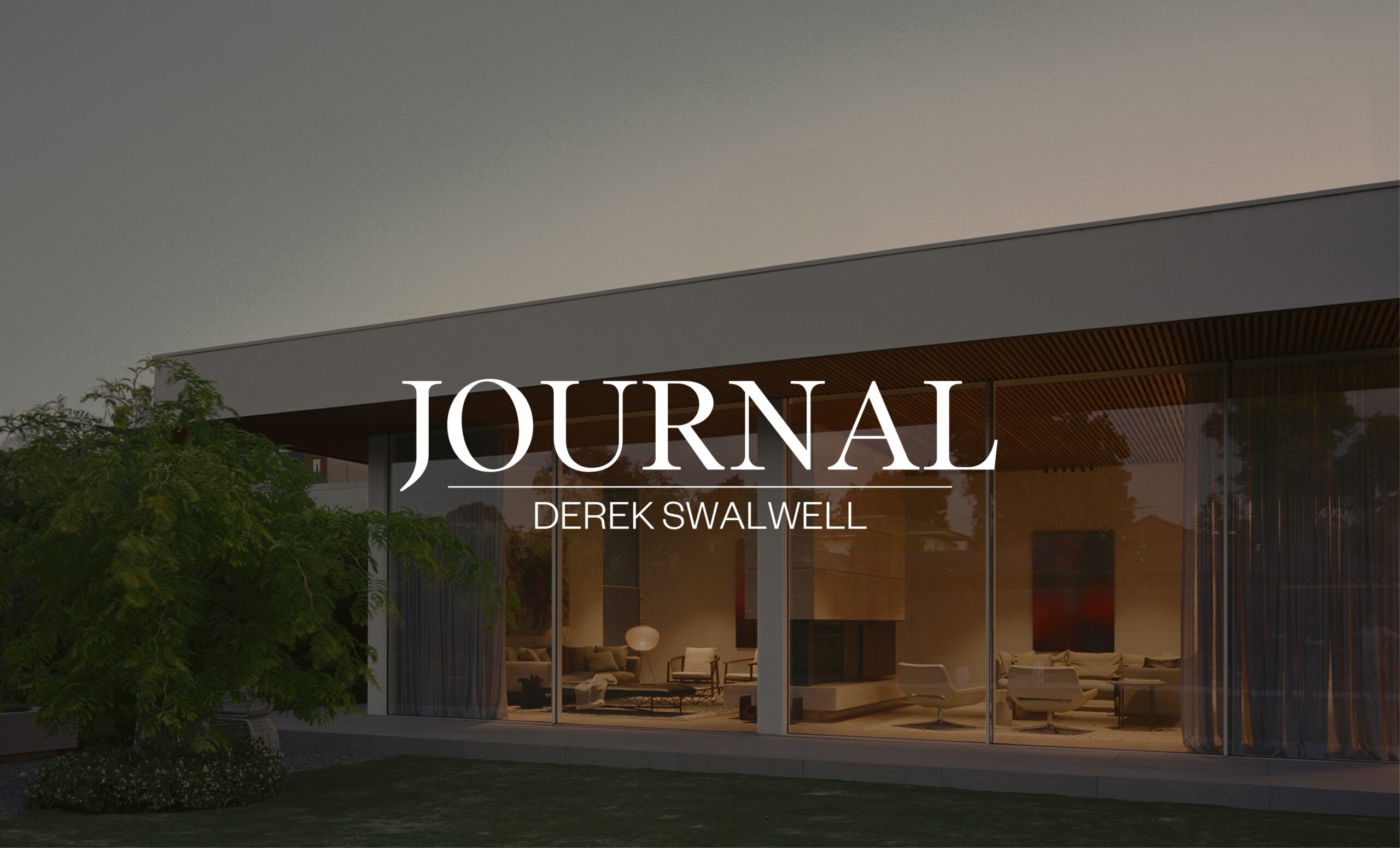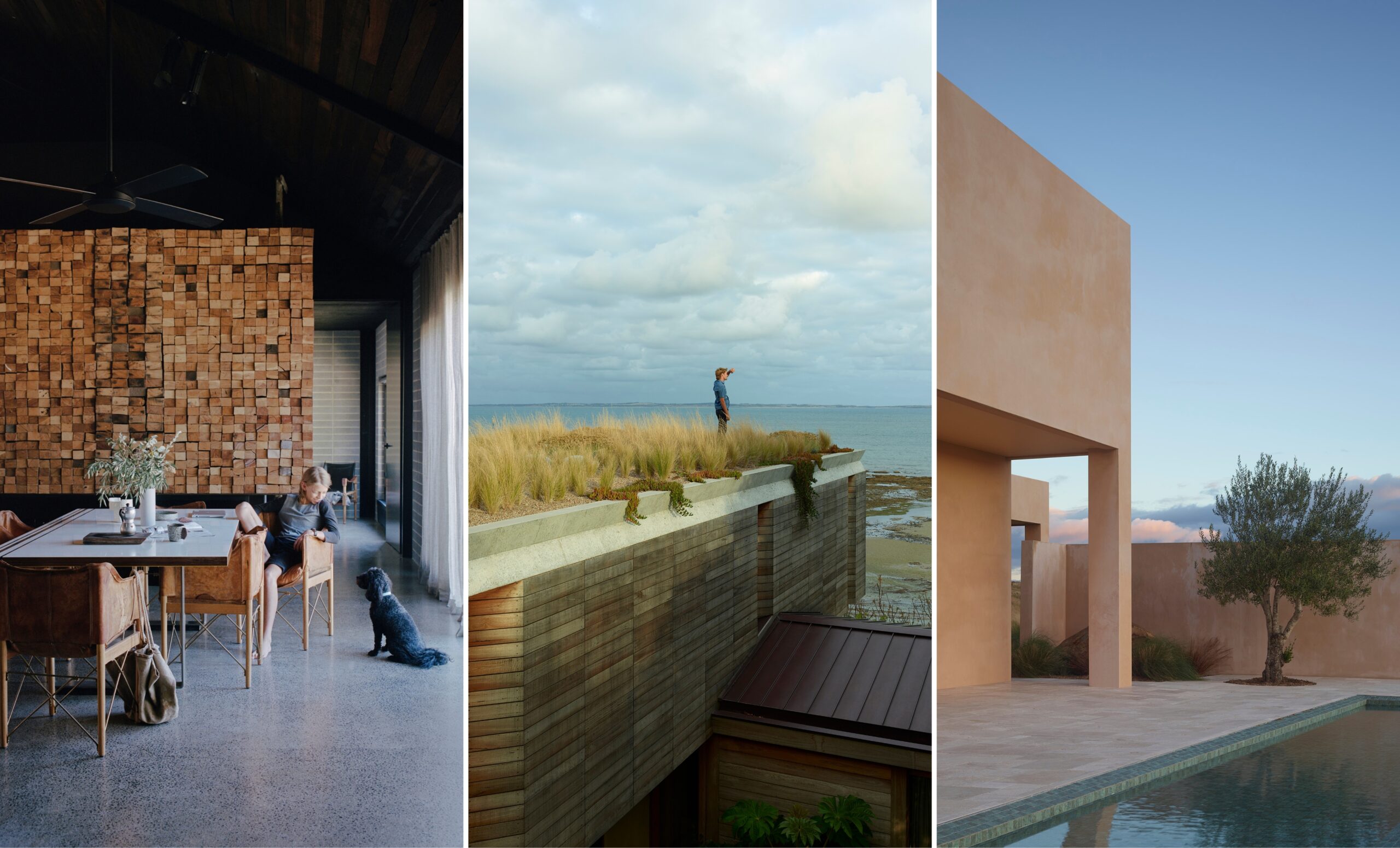A little over two years after our first interview with Jerry Wolveridge, we return to Melbourne to interview prolific photographer, Derek Swalwell. The pair have been closely linked throughout their careers. Whether he’s photographing architecture, directing a shoot for a car brand, or creating self-directed series around the world, the question remains the same: what story are we telling, and who is it for?
We sit down with Derek to talk about inspiration, the industry, creative pursuit, and the cyclical relationship between audience and creative.
The seed, the studio and the second client
Derek’s love for photography began in architectural books and publications. He was inspired by iconic American photographers such as Julius Shulman and Ezra Stoller who captured mid-century homes in the grittiness of the hard Californian sun, or towering structures of the New York skyline. His appetite grew to include work closer to home through Australian architectural magazines, though they began publishing a little later in the piece.
The mid-to-late-1990’s marked the start of Derek’s studio in Melbourne, a market that had only two prominent architectural photographers at the time. The method of marketing then was printed folios and mail campaigns, letterbox drops and what we now call snail mail. Relationship building, one envelope at a time.
It was through one such campaign that Derek received a call from a man who would become his second client. A recently established architect based in a small office in Cremorne.
His name was Jerry Wolveridge.
“A lot has happened in 27 years,” Derek recalls. “When I met Jerry, I was shooting film. Digital was available, but it wasn’t refined enough for me to use professionally.”
While Derek and Jerry continue to work together all these years later, it didn’t take long for digital photography to develop. Almost three decades after Derek first mailed Jerry, those changes grew complexities with shifts in market appetite, industry, technology and audience behaviour.
A responsive industry, in a snapshot
In the early years, architecture, photography and editorials all went hand in hand. Though his work still ends up in magazines and is consistently commissioned by The Local Project, editorial work isn’t as prominent as it was when Derek first entered the industry. As editorial budgets shrank, new opportunities emerged. Derek’s transition into commercial advertising was almost accidental, sparked by a client who reasoned:
“If you shoot the buildings like that, you can definitely shoot the car in front of the building.”
It wasn’t that simple, of course. Lighting, focus, and staging brought new technical challenges, but the commission marked the start of an enjoyable new chapter, and a whole new world of creative opportunities.
Since then, Derek has photographed campaigns for Australia Post, Telstra, Westpac, Sony, and Mini, among many others. Representation in Sydney expanded his reach, and broadened the way he worked. These transitions mattered. Without the variety of commercial work, the rhythm of being singular in his commissions could have led to creative fatigue.
“You must be shooting all the time and shooting different material all the time. Go to Italy and shoot something. Go to Spain and shoot a series, because if you don’t… it’s one thing to work commercially, but if you only work commercially, you know, the flavour is going to go out of it for you.”
Advertising also tested his ability to translate his skillset in visually communicating architectural clarity into brand narratives. These experiences would later underpin his move into motion.
Sustaining the creative
When asked about his style, there’s no simple answer. Within architecture, his range spans from sweeping exteriors to intimate details. Supplier-led architectural shoots with companies like Artadomus might appear similar on the surface, but here the focus shifts: from building to product, from space to purpose.
Commercially, the brief is broader. From state government RBT billboard campaigns shot at night to glossy car brands set against architectural backdrops. Each project adapts to shifting narrators, technologies and ever-evolving audience appetites and platforms. The throughline was found within the creative mindset and Derek’s focus on visual narration. He’s here to tell a story.
You can’t be a perpetual storyteller without nurturing the creative. This narrative instinct is fuel for and fueled by his personal series. Self-produced shoots in Italy and Spain, experimental exhibitions, and ongoing explorations are, as Derek describes, the true sustenance of his practice. “You can’t rely on commissioned work alone for inspiration,” he explains. “Personal work keeps the passion alive and pushes your style forward.”
Swalwell, trending and in motion
The arrival of Instagram changed not only how photographers shared work, but how the industry itself functioned. Suddenly, the platform was awash with talent, with new photographers and visual trends evolving at speed. It marked the beginning of a third party into any brief; the audience now has a hyperactive role. For established professionals, it created both opportunity and challenge.
“Instagram gave my personal projects an audience far beyond what was possible before,” Derek notes. “But it also flooded the market, making it harder for young photographers to find footing.”
The platform reshaped client perspectives. Art directors began commissioning Derek specifically to reproduce aesthetics they had first encountered in his personal series.
Instagram became both marketing channel and creative feedback loop, while – elsewhere – motion added a fresh edge for Derek. Moving into directing was as much about creative renewal as industry demand. Narrative-driven motion work, often staged as a day in the life of a house or family, allows him to explore the emotional resonance of architecture and design in a way stills cannot.
I just love having people move through the spaces and getting ready for work, leaving for work, you know, even getting in the car… or the opposite, brushing their teeth, all this sort of stuff. I kind of like being able to frame parts of the house and have people go about their normal day to day activities.
Across his career, the tools, platforms, and expectations have shifted dramatically from mailed folios to global Instagram visibility, from solitary stills to full-scale productions. The constant has been Derek’s understanding that the secret behind great work is not the medium but the message: it is always about finding the narrative.
That principle has allowed him to adapt, avoid fatigue, and continually push into new territory. “Ultimately, what I want to do is TV ads,” he admits, “because they demand narrative. They demand story.” For all the shifts in technology, client needs, and visual culture, Derek returns to the same core question: what story are we telling, and who is it for?







